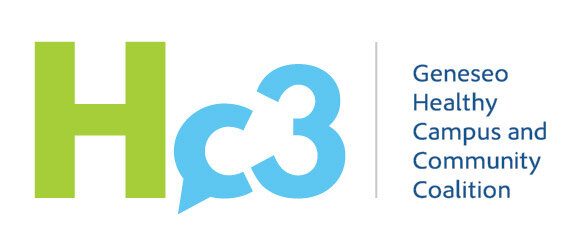
Underage and High-Risk Drinking
Alcohol is still the most commonly used and abused drug among youth in the United States
In 2018, an estimated 55.1 percent of young adults aged 18 to 25 were current alcohol users, which corresponds to about 18.8 million young adults.
2021 Survey of Geneseo Students
Underage and High Risk College Drinking is a significant public health problem that exacts an enormous toll on the physical, emotional, intellectual and social lives of students on campuses across the United States.
Drinking at college has become a ritual that students often see as an integral part of their higher education experience. Many students come to college with established drinking habits, and the college environment can exacerbate the problem.
Consequences of Underage and High-Risk Drinking
Given the opportunity, most students will make the connection between their drinking and some undesirable effects. For example, on our latest survey:
51% said they’d had a hangover in the past 30 days.
33% said they drank when they had planned not to.
17% said they’d “blacked out” (forgotten all or part of what had happened when they drank).
13% said they’d missed work or class due to alcohol.
11% said they’d regretted sexual situations they’d engaged in while drinking.
9% said the quality of their work had suffered due to alcohol.
7% said they’d neglected family, work or school due to alcohol.
There is no easy way to measure the contribution of alcohol and other drugs to consequences such as lower grades, failure, dropping out, or mental health problems, but we know these are common and preventable issues.
We know that 25% of adults with an addiction to alcohol or other drugs began using these substances before the age of 19. Put another way, youth who start drinking before age fifteen are six more times more likely to develop alcohol dependence or abuse later in life than those who begin drinking at or after age 21.
How Do We Reduce Underage and High-Risk Drinking?
The Healthy Campus and Community Coalition and SUNY College at Geneseo received a five year Environmental Prevention grant in 2017.
This grant provided funding for the college and community to implement environmental prevention strategies to reduce underage and high-risk drinking and misuse of other drugs.
Environmental Prevention objectives are to:
Reduce availability and access.
Change norms that support high-risk drinking and illicit drug use.
Review and if necessary revise policies and laws and strengthen their enforcement.
Some of the Environmental strategies we have implemented include:
Alcohol outlet compliance checks (ensuring they are checking IDs)
Fake ID take-back
Prescription drug take-back
“Safe Party” trainings
Narcan training and distribution
Nine Laws You Should Know campaign
Tenant Rights and Responsibilities campaign
Environmental scans and surveys to identify issues and needs
Recent initiatives:
Trainings in Motivational Interviewing and SBIRT (Screening, Brief Intervention and Referral to Treatment)
Safe Party and Narcan trainings
Parent Handbook for parents of incoming students
Incoming student video, survey and support
Welcome information for off-campus students
